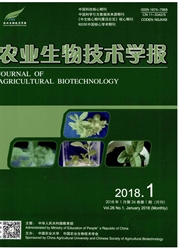

 中文摘要:
中文摘要:
方便、快捷和低成本监测藻细胞油脂含量的方法对微藻生物质能源的研究有重要意义。本研究首先氮限处理培养小球藻(Chlorella vulgaris sp.),采用索氏提取法测定不同生长阶段小球藻细胞脂质含量,结果显示随着培养时间增加,脂质含量相应增加,培养第四天脂质增加至最高(12%-13%)。同时利用利用三种染色法(尼罗红荧光分光光度计法、苏丹黑B染色分光光度计法和油红O染色分光光度计法)测定不同生理状态小球藻细胞总脂相对含量,结果表明3种染色方法所测的吸光度值与索氏提取法测定的油脂含量均呈线性相关,可以用回归方程y=kx+b(y为脂质百分比含量,x为测定吸光值)表示。尼罗红染色法的回归方程为y=0.009543x+3.087(580 nm荧光测定值),相关系数R2为0.957 7(P〈0.001)。苏丹黑B染色法的回归方程为y=30.06x+3.705(600 nm测定光密度值),相关系数R2为0.960 3(P〈0.001)。油红O染色法的回归方程为y=72.83x-27.87(600 nm测定光密度值),相关系数R2为0.887 8(P〈0.005),但此法测定的光密度值范围仅0.4-0.6。这些结果表明三种染色法可以用来测定小球藻脂质含量,尼罗红法需采用测定荧光的分光光度计,方法简单快速,结果灵敏,但成本相对较高。苏丹黑B染色法测定步骤相对繁琐,但所用仪器较为普通,试剂成本也较低。油红O法测定结果灵敏度较低,且误差较大。本研究为不同实验室如何选择染色法测定微藻脂肪含量提供有益指导。
 英文摘要:
英文摘要:
A quick, simple, in situ, cheap and accurate method for lipid content determination in microalgae is important to microalgae biodiesel research. In this study, Chlorella vulgaris was cultivated in nitrogen depleted media, and total lipids were extracted by Soxhlet extraction at different growth stages, and the result showed lipids content increased with the increase of cultivation time. Lipid content of the biomass was highest(12%-13%) at the 4th days of cultivation. At the same time, we used three staining methods(Nile red,Sudan Black B and Oil Red O dye methods) for quantification the relative lipid levels in various stage strains of C. vulgaris. The results showed that there was a linear correlation between the lipids level and the light absorb value of stained microalgal cells. The content of microalgal cell lipids(y) was related to the absorbance(x) of cells and can be expressed with a regression equation of the form y =kx+b. The regression equation ofNile red method was y=0.009543 x + 3.087(fluorescence value at 580 nm), and the correlation coefficient(R2)was 0.9577(P〈0.001). For Sudan Black B method, the equation was y=30.06x+3.705(optical density at 645nm), and R2 is 0.9603(P〈0.001). In Oil Red O dye manner, the regression equation was y=72.83x-27.87(optical density at 600 nm), and R2 was 0.8878(P〈0.005), but optical density at 600 nm ranged only within0.4-0.6. These results indicated that three staining strategies were suitable for estimating the lipid content of C. vulgaris cells. The Nile red method involved incubating live cells in the dye and then reading fluorescence with a spectrophotometer, and application of this method was simple, high sensitivity, rapid but high cost.Sudan black B method had relatively complicated steps, but this strategy had lower cost and equipment. Oil Red O dye manner also could be used to test lipids content, but its most significant disadvantage is its low sensitivity and large error. The research results provide gui
 同期刊论文项目
同期刊论文项目
 同项目期刊论文
同项目期刊论文
 期刊信息
期刊信息
